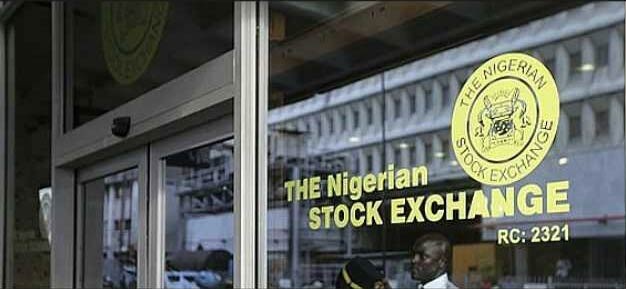Nigeria’s Markets Trade Faith for Yield as Bonds Eclipse Equities (Week 41)
During Week 41 (6–10 Oct 2025), Nigeria’s market matured through yield, not speculation. ₦NGXASI rose 2.37% to 146,988 as bonds surged 1,038% in value. ₦MTNN, ₦AXAMANSARD, and ₦SOVRENINS led gains while liquidity shifted decisively toward government debt.

Nigeria’s capital markets recalibrated during Week 41 (6–10 Oct 2025) as the Nigerian Exchange (₦NGXASI) closed higher despite compressed turnover and shifting liquidity toward government bonds. Equity value traded declined from ₦ 14.54 billion on Monday to ₦ 10.45 billion by Friday, with cumulative weekly volume of 2.29 billion shares valued at ₦ 90.3 billion across 138 177 deals. The contraction in daily deals—from 35 467 to 21 813—signals thinning retail participation even as institutional flow remained steady. Market breadth hovered near parity, with 49 advancers versus 23 decliners at the week’s open and 25 each at close, showing defensive positioning rather than risk aversion.
The ₦NGXASI rose 2.37 percent week-on-week to 146 988 points, marking its fourth consecutive advance. Heavyweights drove the gain: ₦MTNN climbed 10.8 percent, ₦AXAMANSARD 11.8 percent, ₦CHAMS 11.7 percent, and ₦SOVRENINS 16.7 percent, offsetting pressure in the banking segment. The ₦NGXPREMIUM index rallied 7.19 percent, ₦NGXIND 4.23 percent, ₦NGXINS 3.69 percent, while ₦NGXBANK slipped 0.41 percent as profit-taking hit ₦ZENITHBANK and ₦GTCO. This rotation away from pure-lending plays toward insurers and industrials mirrors behavior in frontier peers adjusting to higher real yields. Total market capitalization reached ₦ 93.3 trillion, up ₦ 2.1 trillion in a week, signaling valuation support even as participation narrowed.
Sectoral flows remained concentrated. Financial Services dominated with 1.355 billion shares (59 percent of volume) worth ₦ 24.6 billion (27 percent of value). ICT followed with ₦ 7.8 billion and Agriculture ₦ 3.6 billion. Within financials, ₦FIDELITYBK, ₦CHAMS, and ₦ELLAHLAKES collectively absorbed nearly 19 percent of total transactions, underscoring the narrow base of active liquidity. While domestic investors rotated defensively, the absence of broad-based retail momentum means index stability is now driven by fewer institutional trades.
Fixed income overwhelmed equities. Bonds recorded 984 000 units valued at ₦ 883 million—up 1 038 percent in value and 1 438 percent in volume week-on-week. The Bond-Equity Value Ratio (BEVR) surged beyond 80, showing capital migrating to long-duration FGN instruments. Indicative secondary-market quotes placed five-year notes around 98–104 percent of par (yield ≈ 15.5 percent) and ten-year at 93–101 percent (yield ≈ 17 percent). Such levels eclipse dividend yields across the ₦NGXASI, making sovereign debt the anchor of portfolio allocation. Exchange-Traded Products (₦NGXETP) saw 147 745 units traded (₦ 24.08 million value) in 372 deals, volume down 22 percent but value up 39 percent — evidence of institutional preference for higher-priced ETFs while using bonds for duration hedging.
Dividend adjustments defined the banking board. ₦UBA (₦ 0.50), ₦ZENITHBANK (₦ 0.60), ₦GTCO (₦ 0.50), and ₦STANBIC (₦ 1.50) went ex-dividend during the week, generating short-term volatility yet limited drawdown. Their combined ex-dividend stability supports the thesis that top banks now trade as yield instruments rather than growth assets. Investors are valuing them on cash return profiles similar to medium-term bonds, blurring the line between equity risk and fixed-income comfort.
The gainers’ board extended beyond insurers and telcos. ₦OMATEK rose 12.3 percent and ₦MTNN 10.8 percent as tech sentiment rebounded. Decliners were dominated by thinly traded counters such as ₦LIVINGTRUST (−14.6 percent), ₦NEIMETH (−11 percent), and ₦UHREIT (−10 percent). While the average advancers-to-decliners ratio implied neutral sentiment, total value turnover fell, confirming capital rotation rather than fresh inflows. Foreign participation proxies extracted from ₦NGXETP and bond flows indicated a mild positive net inflow, suggesting offshore re-entry through fixed-income rather than equities.
At the macro level, Week 41 encapsulated Nigeria’s re-pricing cycle: rising bond yields, stabilizing inflation expectations, and a steady currency combined to redirect liquidity. The simultaneous advance of the ₦NGXASI and explosion in bond turnover shows dual-track recovery—equity optimism sustained by blue-chip valuations and fixed-income demand driven by yield hunger. As real yields settle near 15 percent and inflation decelerates toward single digits, asset-allocation behavior is normalizing. This maturity shift means Nigeria’s capital market is evolving from speculative trading into a yield-anchored ecosystem where debt and equity compete for capital on risk-adjusted merit.
Heading into mid-October, turnover could rebound toward ₦ 120 billion if institutional inflows persist and policy stability holds. Insurance and telecom counters are positioned for rerating, while the banking sector may trade sideways pending new guidance from the Monetary Policy Committee. For now, Week 41 data affirm that Nigeria’s market discipline is strengthening: investors are learning to trade structure, not noise.





